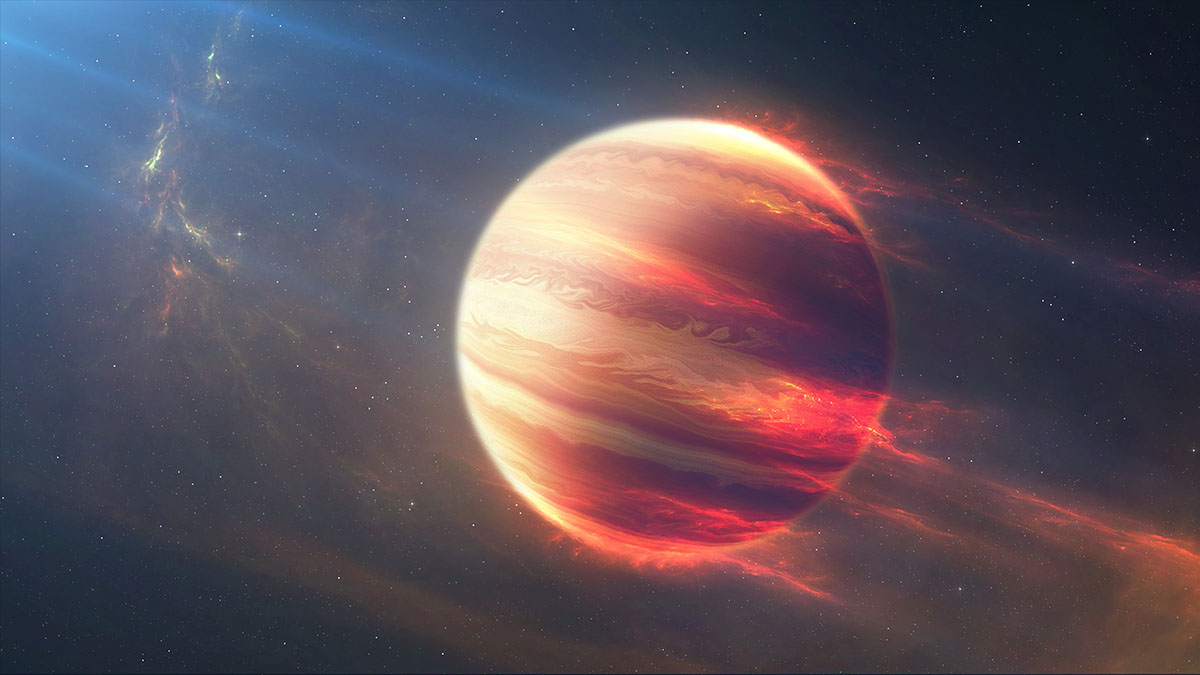pardon me, but your hot spot is on sideways

As if a planet as massive as Saturn being hurled around its star in an orbit that takes less to complete than a typical work week here on Earth, and tidally locked as the kind of heat that can melt rock and vaporize metals bakes its day side wasn’t weird enough, how about taking the same planet and putting its hottest place away to the side, about 80° off where it should be? Sounds odd, doesn’t it? If the planet’s hemisphere was always baked by a star, a hot spot should be front and center at the equator, with slight offsets to account for the wind and endless storms of a gas giant. And yet, the planet Upsilon Andromedae b has its hot spot off to the side, next to the transition between the day hemisphere and the night hemisphere. Why? The highly technical and peer reviewed explanation of this finding can best be summarized by a shrug because we really don’t know.
Winds seem to be the most probable culprit here because most ideas tend to rely on some hidden motion of superheated and chilled gases in Upsilon Andromedae b’s atmosphere. Since the planet doesn’t spin on its axis, or at least shouldn’t due to the tidal pull of the Sun-like yellow-white star it orbits, rotation whipping huge, superheated storms towards the night side wouldn’t really work as a viable explanation. If it was the motion of storms in general, radiating from the center of the planet’s day side and colliding with the colder clouds at the terminator (the twilight areas between the night and day hemispheres of tidally locked worlds), we would see a band of heat around Upsilon Andromedae b’s vertical midsection. Another option could be a heat sink that’s formed by the planet’s turbulent storms. But if there’s a cyclone of cool air attracting the heat being generated at and around the equator and perpetuated by constant sunlight, why is it at an 80° offset, and why is it only in one big blotch on the planet’s side? Why aren’t there multiple heat sinks being formed?
Now remember, one might think that tidally locked gas giants have a blisteringly hot day hemisphere while on the other side of the planet, the night hemisphere is in a perpetual icy chill. But a number of new models over the last few years seem to indicate that the dynamics of Hot Jupiters are more complex than that. Winds from the day side actually warm the night side and the places were the superheated air collides with cooler clouds at the terminator aren’t necessarily home to hyper-violent cyclones. Those effects should only manifest on an eccentric gas giant that quickly swings by its star and gets a sudden influx of energy in the process. So one of the factors to consider in this bizarre finding is that the atmospheres of gas giant close to their stars should be calmer than we think and do a better job of convecting the heat with which they’re bombarded. Though if a subsequent observation of Upsilon Andromedae b confirms that its anomalous hot spot isn’t a mistake or an illusion of some sort, we may have to revise those predictions of relatively more docile Hot Jupiters…





